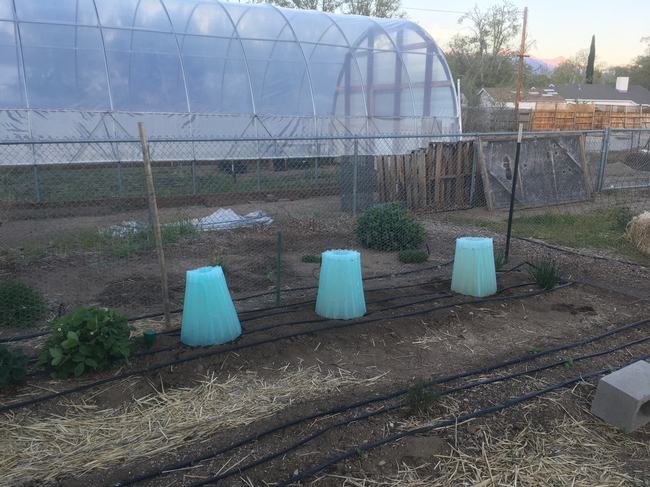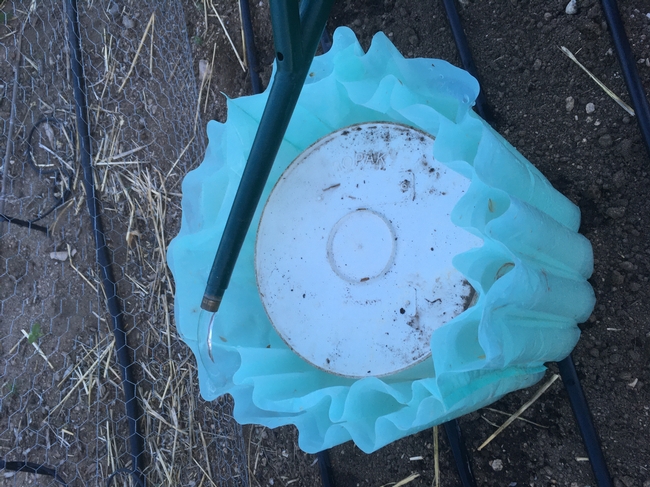This year especially, many people have been eager to get an early start on their vegetable gardens. I felt the urge to get a head start on my garden as well, but unfortunately there are many variables outside of my control that determine when I can safely put plants in the ground without fear of them being killed by a spring frost. What to do when I'm ready to begin — my starts are an appropriate size, but I'm not “in the clear” with the weather?
This year I decided to try using Wall-O-Waters, which at first glance resemble oversize freezer packs. In truth they are relatively simple structures about 18" tall and 17" in diameter which are designed to protect plants from the elements by forming a barrier to the wind and cold and extend the growing season by creating a warmer environment. While there are many materials that can be used to create a barrier between plants and the elements, the thing that makes Wall-O-Waters so special is the water.
Water is poured into vertical cells to give the Wall-o-Water its shape as well as its efficacy. Throughout the course of the day, sunlight heats up the water in the cells and warms the plants. Water retains heat very effectively and this warmth protects plants from frost damage. Counterintuitively, as water freezes it releases heat, which further protects the tender plants inside. Wall-O-Waters are most commonly used in conjunction with tomato plants because of their sensitivity to cold. This is the crop I will be using them on as well.
I found that the easiest way to set up Wall-o-Waters was with a 5-gallon bucket and a partner. The Wall-o-Water website recommends setting them up 6-8 weeks prior to the last frost date in order to warm up the soil to create an optimal environment for root growth. Unfortunately I did not see this advice until perusing their website while writing this post! Rather than setting up the Wall-O-Waters in advance, I set them up just after planting my tomato starts. To do so, I put the bucket face down so that it was protecting the plant. I then slid the empty Wall-o-Water onto and around the bucket, making sure that the “open” sides of the cells were facing up. As my partner held open each individual cell, I used a watering can with a narrow spout to fill each pocket. If you're setting up without a bucket, it's a good idea to remember to create counter balance during this process so that the whole thing does not tip over. Once I was done, I carefully removed the bucket. If the Wall-o-Waters act as advertised, they should protect my plant in temperatures as low as 12? and give the plants an extra dose of warmth on chilly nights.
Considering the recent heat wave, this whole exercise may have been unnecessary, but extra precautions are never a bad idea in the fickle Eastern Sierra.
Here's hoping this yields some early tomatoes! Updates to follow.
Sources: https://www.wall-o-water.com/

